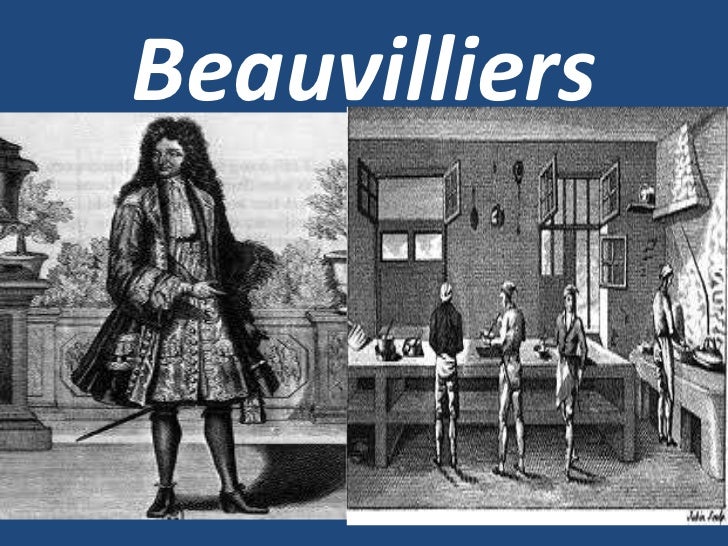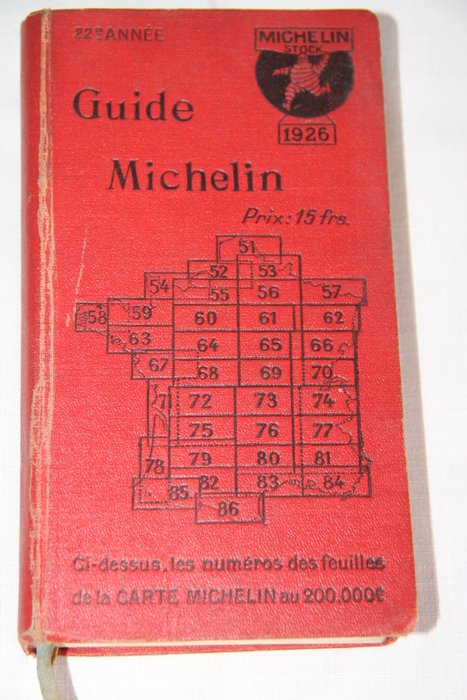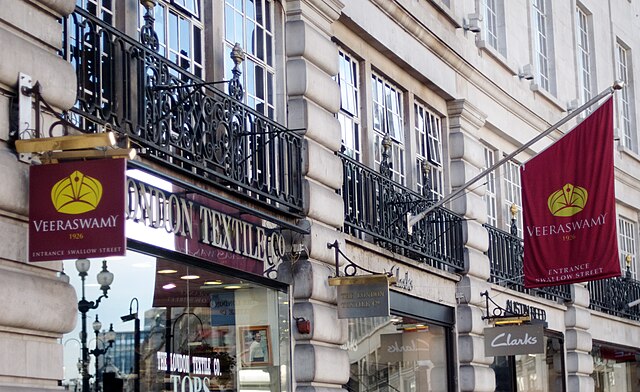|
| | Author | Message |
|---|
Caro
Censura

Posts : 1522
Join date : 2012-01-09
 |  Subject: Restaurant history Subject: Restaurant history  Mon 12 Jul 2021, 04:23 Mon 12 Jul 2021, 04:23 | |
| We very recently saw the film Delicieux at the French Film Festival and wondered how accurate its portrayal of the progression of buying meals was. It was set in France just before the Storming of the Bastille and the French Revolution and portrayed a cook working for a Duke who was shown as corrupt and arrogant. Because the food he served wasn't up to the duke's requirements he was chased out of town. The food he had been cooking was to the order of the person he was working for and was the same for everyone. He sets himself up in another town and eventually finds a new way of serving food, with individual dishes made to order (ie the present-day restaurant) instead of the same food ordered by one man.
Does anyone (MM maybe) know if that is true to life or not? |
|   | | Triceratops
Censura

Posts : 4377
Join date : 2012-01-05
 |  Subject: Re: Restaurant history Subject: Re: Restaurant history  Mon 12 Jul 2021, 10:05 Mon 12 Jul 2021, 10:05 | |
| The first modern restaurant is considered to the La Grande Taverne des Londres founded around 1782 by Antoine Beavilliers. Beavilliers' establishment combined an elegant dining room, trained waiters, a well stocked cellar and a superior kitchen. The first time all of these were combined in a single setting.  |
|   | | Meles meles
Censura

Posts : 5121
Join date : 2011-12-30
Location : Pyrénées-Orientales, France
 |  Subject: Re: Restaurant history Subject: Re: Restaurant history  Mon 12 Jul 2021, 10:18 Mon 12 Jul 2021, 10:18 | |
| Edit: crossed posts with Trike but will post anyway.
It is frequently suggested that the idea of restaurants, as in somewhere to eat fine food cooked to order, arose during the French Revolution as a consequence of all the trained cooks who were now out of work because their patrons had either gone into exile or to the guillotine. I think that is largely false or at least a gross simplification, although certainly one of the first of the new 'restaurants' operating with that name was indeed founded by the ex-chef to the exiled Count of Provence and future Louis XVIII. The idea of premises where one could sit down at a small private table and order a cooked meal from a fixed menu had existed for at least a century in both France and England. Pepys mentions going to such 'ordinaries' - essentially private houses where one sat at small tables and ordered food that was cooked to order and then served to the table. On one occasion in 1667 Pepys, arch-conservative and typical xenophobic Englishman as he was, once even followed the advice of his periwig maker and took his wife Elizabeth to a specialist 'French house' where they dined "... all in the French manner, a mess of pottage first and then a couple of pigeons a l'esteuve, and then a piece of boeuf a-la-mode exceeding well seasoned and to our great liking." The meal cost him 6d.
The first French establishments calling themselves 'restaurants' actually came into operation just before the French Revolution, as places were one could take a very simple soup or other light dish to literally restore or revive (restaurer in French) one's jaded appetite: the word 'restaurant' had existed since the early 16th century to mean a "restorative beverage". In 1765 (ie when Louis XVI was still on the throne) a French chef, A. Boulanger, established a business near the Louvre selling soups and other light "restaurants" ie restoratives. The popularity of this type of dining was probably based on Enlightenment-era sensibilities among the wealthy merchant class in Paris that food was not just for simple sustenance and that it was important to demonstrate ones refinement and sensitivity by not eating the coarse foods typically associated with the common people. I suspect moreover that it was not just a matter of what was being served but how it was served. Boulanger and other early restaurateurs seem to have copied a service model that already existed in French coffee-house "café" culture. Customers sat at small individual tables with just their friends and from a printed menu could order dishes which were then brought to their table by waiters, as opposed to the tavern keeper simply saying what was the dish of the day. Gone also were the long shared tables with everyone eating the same meal which was only available at certain fixed times of the day.
The idea rapidly caught on and sometime between 1782 and 1786 another chef, Antoine Beauvilliers founded "La Grande Taverne de Londres", which by its name might well have been deliberately intended to copy the style of the famous "London Tavern" situated in London's Bishopsgate (opened in 1768) which boasted a large and well-decorated dining room plus smaller rooms available for private hire and was known for its good food. According to the French epicure Brillat-Savarin, Beauvilliers' establishment in Paris was "the first to combine the four essentials of an elegant room, smart waiters, a choice cellar, and superior cooking". Beauvilliers' restaurant was aimed at a wealthy and aristocratic clientele and it was he that had once been unemployed as chef to the future Louis XVIII. Unfortunately his restaurant became known as a rendez-vous of conservative, anti-government political factions in which Beauvilliers was also implicated, and in 1795 he was forced to close. Some years later he reopened a second "Grande Taverne de Londres" in new premises but by then tastes had changed and he met with less success. This restaurant closed in 1825.
By the first years of the 19th century the term "restaurant" as a shortened form of "établissement de restaurateur" was becoming widespread in France being popularised by the first restaurant guide (L'Almanach des Gourmands) which was published annually from 1803 to 1812 by the wealthy gastronome Grimod de La Reynière. Meanwhile London largely continued with its familiar taverns, hotel dining halls, chop houses and gentlemen's clubs. The first restaurant guide for London was published in 1851 to assist the masses streaming to the Great Exhibition but even so it noted there was almost nowhere "suitable for ladies".
Last edited by Meles meles on Mon 12 Jul 2021, 12:22; edited 5 times in total (Reason for editing : added a few extra bits) |
|   | | Triceratops
Censura

Posts : 4377
Join date : 2012-01-05
 |  Subject: Re: Restaurant history Subject: Re: Restaurant history  Mon 12 Jul 2021, 11:01 Mon 12 Jul 2021, 11:01 | |
| |
|   | | Vizzer
Censura

Posts : 1853
Join date : 2012-05-12
 |  Subject: Re: Restaurant history Subject: Re: Restaurant history  Tue 13 Jul 2021, 20:44 Tue 13 Jul 2021, 20:44 | |
| - Meles meles wrote:
- According to the French epicure Brillat-Savarin, Beauvilliers' establishment in Paris was "the first to combine the four essentials of an elegant room, smart waiters, a choice cellar, and superior cooking".
Yes, definition seems to be key here. One needs to be able to distinguishing between a restaurant, an inn, a tavern and a chop house etc. And different countries each have their own variants and defining characteristics such as auberges in France, osterias in Italy, bodegas in Spain and tavernas in Greece. In Erotica Romana, his raunchy 1790 poem, Johann Wolfgang von Goethe writes: ' Und noch schöner von heut an seid mir gegrüßet, ihr Schenken,
Osterien, wie euch schicklich der Römer benennt;' ' And ever more delicious today I recall your taverns,
Or osterias to use the proper Roman term;' He doesn’t say exactly why he uses the term osteria rather than tavern but it’s believed that an osteria (unlike a tavern) would serve food as well as drink. And the serving of food usually meant that it was also suitable for women to frequent. And true enough Goethe then describes meeting his sweetheart there who spills some wine on the table and traces love notes to him in the spilt liquid. He doesn’t, however, mention what food was eaten. Osterias in Italy have been in existence for a very long time. This board game from 1712, for instance, lists all the osterias to be found in and around Bologna:  One starts the game off on square no. 1 at the Osteria di Palazo (in the bottom left-hand corner) where can be got ‘buon pane e buon vin’ (good bread and good wine). Each square then gives the name and address of an osteria, its sign and says which speciality that particular osteria is known for. Some of them are appropriately named such as Li Due Gambari (the Two Crayfish) which specialises in crayfish (obviously), La Nave (the Ship) does fish, while Primavera (Springtime) is known for its salads. Some are slightly cryptic such as Il Gallo (the Rooster) which promises good eggs when surely it should have been called La Gallina or Il Pollo i.e. the Hen or the Chicken, while Il Sole (the Sun) serves up ‘buone frittate’ (good omelettes). Some are simply misleading such as La Cervetta (the Hind) which doesn’t serve venison as one might think but rather colombi (doves). Il Melone (the Melon) does tortelli (stuffed pasta) while La Magiorana (Marjoram) offers tripe. La Barchetta (the Barge) won’t bring you eels but rather truffles (tartufi). If you’re looking for eels then go to Il Biscione (the Adder) – so we’re back to cryptic. And there is indeed an element of snakes and ladders to the game. There are a couple of booby squares, which if you land on them means ‘una volta di non giocare’ (miss a go) and you’ll also have to ‘paga un quattrino’ (pay a groat). If you’re lucky then you’ll get to the final square and ‘Il Leoni D’Oro’ (the Golden Lion) where everyone wants to go because everything on the menu is good - ‘Tutto Buone, Tira Tutta’. Fast forward to 2021 and the Golden Lion has long since gone, but the osteria on square no. 41, Il Capelo Roso (the Red Hat) is still serving patrons and (in season) stills features pernici (partridge) on the menu. |
|   | | Triceratops
Censura

Posts : 4377
Join date : 2012-01-05
 |  Subject: Re: Restaurant history Subject: Re: Restaurant history  Wed 14 Jul 2021, 13:17 Wed 14 Jul 2021, 13:17 | |
| Founded by the brothers Edouard and Andre Michelin in 1889, the Michelin Tyre Company began producing annual tourist guide books for the convenience of, firstly French, then other European motorists. Beginning with the 1926 edition, the guide included 1 star recommendations for fine dining establishments, expanded in 1931 to 1, 2 and 3 star rating.  Michelin ratings became the standard that the best restaurants aspired to, and are eagerly sought after by chefs. La Gavroche became the first UK restaurant to receive a Michelin star in 1974, the first to a 2 star in 1977 and a first to a 3 star in 1982. ( currently a 2 star)  |
|   | | Triceratops
Censura

Posts : 4377
Join date : 2012-01-05
 |  Subject: Re: Restaurant history Subject: Re: Restaurant history  Thu 15 Jul 2021, 12:28 Thu 15 Jul 2021, 12:28 | |
| No high street in the British Isles would be complete without an Indian restaurant. This was the very first one, opened in 1810, in George Street, London. Unfortunately, demand at the time was insufficient to match the costs, and the restaurant closed within a short while.  The oldest Indian restaurant in continuous operation Britain, is the Veeraswamy in Regent Street London, founded in 1926:  |
|   | | Triceratops
Censura

Posts : 4377
Join date : 2012-01-05
 |  Subject: Re: Restaurant history Subject: Re: Restaurant history  Thu 05 Aug 2021, 16:12 Thu 05 Aug 2021, 16:12 | |
| Cafe Central, Vienna"A well known story is that when Victor Adler objected to Count Berchtold foreign minister of Austria-Hungary, that war would provoke revolution in Russia, even if not in the Habsburg Monarchy, he replied: "And who will lead this revolution? Perhaps Mr. Bronstein (Leon Trotsky) sitting over there at the Cafe Central?""
Vienna in 1913 was a centre of political, intellectual and scientific thought. Many of the participants in these disciplines took part in the city's cafe culture, and one cafe in particular, the Central, was frequented by a number of them.  Among were the inhabitants of Vienna in this year, were Josip Broz Tito, Sigmund Freud, Adolf Hitler, Joseph Stalin and Leon Trotsky. We know that some of them frequented the Central, Stalin was only in Vienna for about a month, but did visit Trotsky on a few occasions. Whether all five of them were in the Central at the one time is unknown. |
|   | | Triceratops
Censura

Posts : 4377
Join date : 2012-01-05
 |  Subject: Re: Restaurant history Subject: Re: Restaurant history  Fri 06 Aug 2021, 17:07 Fri 06 Aug 2021, 17:07 | |
| The Gables, Russel, NZthe oldest operating restaurant in New Zealand. The Gables |
|   | | Sponsored content
 |  Subject: Re: Restaurant history Subject: Re: Restaurant history  | |
| |
|   | | |
Similar topics |  |
|
| | Permissions in this forum: | You cannot reply to topics in this forum
| |
| |
| |
